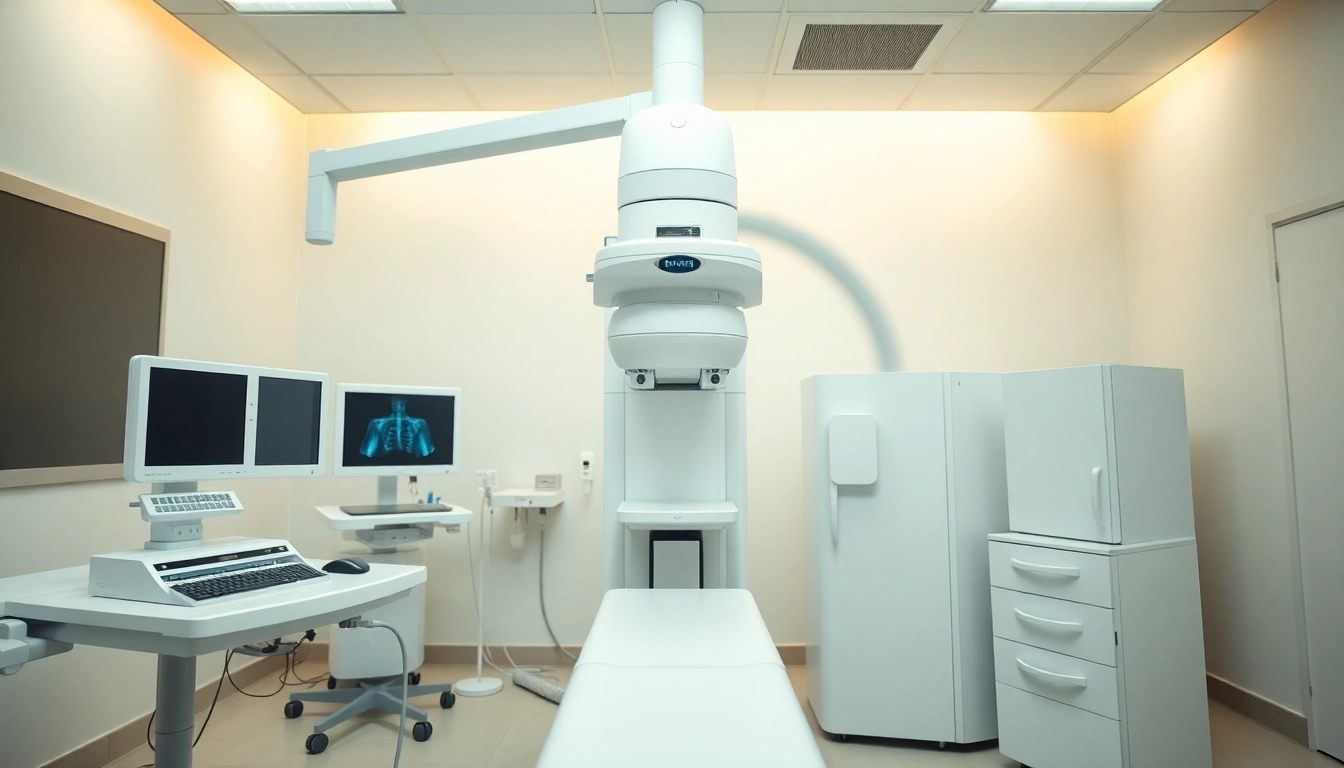Understanding Xray Equipment: Types and Technologies
1. Overview of Xray Equipment Varieties
X-ray equipment plays a vital role in diagnosis and treatment across the healthcare industry. These systems can generally be classified into several categories based on their application and technology. The primary types of X-ray equipment include:
- Standard X-ray Machines: These are the most common and are used for straightforward imaging of bones and other dense structures.
- Digital Radiography (DR): This advanced technology uses digital sensors to capture and display images, offering quicker processing times and improved image quality.
- Computed Radiography (CR): CR utilizes special imaging plates to capture X-ray images which are then digitized, providing a mechanism slightly slower than DR but still superior to traditional film.
- Mobile X-ray Units: Portable X-ray machines that enable imaging at the bedside – particularly useful in emergency situations.
- Fluoroscopy: This type of X-ray equipment provides real-time imaging for procedures, guiding interventions and diagnostics.
- CT Scanners: While technically different, CT scans use X-ray technology to produce cross-sectional images of the body, often used for more detailed diagnostics.
As healthcare evolves, understanding the range of X-ray equipment is integral for professionals looking to optimize patient care and operational efficiency. For assistance with Xray equipment sales and service, facilities must choose the type that aligns with their specialized needs.
2. Key Technologies in Modern Xray Systems
The efficiency and effectiveness of modern X-ray systems are driven by cutting-edge technologies. Some key advancements include:
- Image Processing Software: Modern X-ray systems are often equipped with advanced imaging software that enhances image quality and allows for advanced manipulations such as contrast adjustments and digital filters.
- Wireless Connectivity: Many digital systems now feature wireless capabilities for streamlined image transfer, enabling immediate access and analysis by healthcare professionals.
- AI and Machine Learning: Emerging use of artificial intelligence in interpreting X-ray images is reshaping diagnostics by improving accuracy and reducing human error.
- Advanced Detectors: Innovations in detector materials have improved sensitivity, resulting in lower radiation doses for patients while maintaining high-quality images.
- Automated Exposure Control: This technology automatically adjusts the X-ray beam according to the patient’s anatomy and density, enhancing safety and precision.
3. Evaluating Equipment Features and Benefits
Choosing X-ray equipment entails evaluating various features that impact functionality, cost-effectiveness, and patient outcomes. Key aspects to consider include:
- Image Quality: High-resolution imaging enhances diagnostic capabilities and can lead to better patient outcomes.
- Workflow Integration: Consider how well the equipment can integrate with existing systems and processes, notably electronic health records (EHR) and PACS (Picture Archiving and Communication System).
- Ease of Use: User-friendly interfaces help reduce errors and facilitate quick training for new staff.
- Support and Maintenance: Reliable service and support ensure that equipment remains operational and that technical challenges are swiftly addressed.
- Cost of Ownership: Analyze both the purchase price and the long-term operational costs, including maintenance, software updates, and training.
Choosing the Right Xray Equipment for Your Facility
1. Factors to Consider when Selecting Xray Equipment
Selecting the right X-ray equipment demands consideration of several critical factors that include the facility’s patient demographics, procedure types, and budget constraints:
- Patient Volume: High-volume facilities may require advanced, faster systems capable of processing a large number of patients effectively.
- Types of Procedures: Understand the specific diagnostic needs of the facility. Specialized capabilities may warrant the need for advanced systems like fluoroscopy or CT scanners.
- Space Limitations: Evaluate the physical space available for equipment installation, as different systems have varying space requirements.
- Regulatory Compliance: Ensure the selected equipment adheres to local regulations and safety standards, which are crucial for practice longevity.
- Future-proofing: Consider technology that can scale with the facility’s needs as medical advancements occur.
2. Comparing Xray Equipment Sales Options
When it comes to sourcing X-ray equipment, professionals face various avenues that can impact the overall choice. Options include:
- New Equipment: Purchasing new models ensures the latest technology and warranty coverage but may come with higher initial costs.
- Refurbished Equipment: These options can be more cost-effective while still delivering capabilities that meet clinical needs if sourced from reputable dealers.
- Leasing Options: For facilities concerned about upfront costs, leasing equipment serves as a strategic option, allowing systems to be upgraded at the end of the term.
- Direct Purchase vs. Third-Party Resellers: Weigh the benefits of purchasing directly from manufacturers against the potential savings and service benefits offered by resellers.
3. Budgeting for Xray Equipment Purchases and Services
Budgeting for X-ray equipment requires a comprehensive understanding of both initial costs and ongoing expenses:
- Initial Costs: Factor in expenses such as equipment purchase, installation, and training.
- Ongoing Costs: Consider maintenance contracts, service agreements, and the cost of consumables like imaging plates.
- Potential ROI: Analyze the return on investment by projecting the equipment’s contribution to workflow efficiency and patient volume.
- Hidden Costs: Don’t overlook potential indirect costs, such as downtime and additional staffing costs during training periods.
The Importance of Xray Equipment Maintenance and Service
1. Regular Maintenance: Ensuring Safe Operations
Routine maintenance is crucial for the longevity and safety of X-ray equipment. A maintenance schedule should include:
- Daily Checks: Operators should conduct basic inspections each day to identify any immediate issues before operations begin.
- Quarterly Maintenance: A more in-depth service review should occur every three months, ensuring that all components are functioning optimally.
- Yearly Inspections: Comprehensive assessments by accredited professionals can help ensure compliance with regulatory standards and increase overall safety.
2. Common Service Issues and Solutions
Even the best-maintained X-ray systems may encounter issues. Some common problems include:
- Image Quality Degradation: This can occur due to malfunctioning components or improper calibration. Regular quality control checks can mitigate such problems.
- Mechanical Failures: Address wear and tear proactively. Keeping a close eye on mechanical parts and opting for timely replacements is essential.
- Software Glitches: Timely updates and regular software maintenance can prevent operational delays and ensure that users have access to the latest features.
3. Finding Quality Xray Equipment Service Providers
Secure reliable service for X-ray equipment by considering the following:
- Reputation and Experience: Research potential service providers to assess their history and level of expertise specific to your equipment type.
- Response Time: The ideal provider should offer prompt service to minimize downtime. Ensure you understand their guaranteed response times.
- Comprehensive Coverage: Opt for a provider that offers inclusive service agreements that cover both routine maintenance and unexpected repairs.
Maximizing Efficiency and Compliance in Xray Services
1. Best Practices for Operating Xray Equipment
Efficient operation of X-ray equipment requires adhering to industry best practices, including:
- Staff Training: Regular training programs for staff ensure they are up-to-date with operational protocols and can handle equipment proficiently.
- Standardized Protocols: Developing standardized procedures for operations helps create uniformity and reduces errors.
- Patient Positioning Techniques: Proper positioning is crucial for accurate images and reduces the chance of repeated scans.
2. Regulatory Compliance in Xray Procedures
Compliance with regulations is mandatory in maintaining a safe healthcare environment. Important aspects include:
- Radiation Safety: Adhering to protocols that minimize radiation exposure to patients and staff must always be a priority.
- Documentation: Maintain thorough records of all procedures, including imaging results, equipment inspection logs, and maintenance activities.
- Staff Credentials: Ensure all operators are licensed and have undergone the necessary training to operate equipment safely and effectively.
3. Advanced Techniques to Improve Workflow Efficiency
Innovation continues to drive efficiency in X-ray services. Facilities can adopt advanced techniques such as:
- Implementing Automation: Utilizing automated systems for scheduling and patient management can drastically reduce administrative workloads.
- Enhanced Data Analysis: Integrating advanced analytics in the workflow helps identify patterns in patient throughput and optimize scheduling.
- Collaboration Tools: Using technologies that facilitate communication among staff can enhance coordination and patient flow.
Future Trends in Xray Equipment and Services
1. Innovations Impacting the Xray Industry
As technology progresses, several innovations are set to reshape the X-ray industry:
- Portable X-ray Devices: Miniaturized technology for portable systems will enhance the ability to provide care in underserved areas.
- 3D Imaging Technology: Innovations in 3D imaging will provide clearer, detailed visuals for diagnostic accuracy, especially in complex cases.
- Integration of IoT: Smart devices will enhance interoperability and allow for real-time diagnostics and monitoring.
2. Predictive Analytics and Xray Equipment Performance
Utilizing predictive analytics can fundamentally improve how X-ray equipment functions by:
- Pattern Recognition: Predictive analytics can identify patterns in equipment use and malfunctions, promoting preventive maintenance.
- Performance Insights: Organizations can harness data analytics to assess the efficiency of X-ray workflows and identify improvement areas.
3. The Role of Telemedicine in Xray Services
Telemedicine’s growth is revolutionizing X-ray services, primarily through:
- Remote Consultations: X-ray images can be shared in real-time with specialists, who can perform consultations and make diagnoses without being physically present.
- Access to Care: Patients in remote or underserved areas can receive prompt evaluations and care based on X-ray diagnostics.
- Monitoring and Follow-ups: Ongoing patient monitoring using telemedicine technologies can improve adherence to treatment plans and reduce the need for in-person visits.



